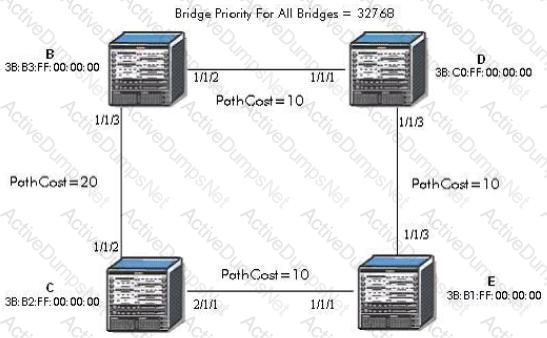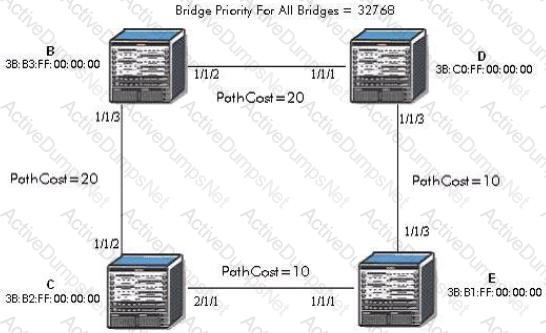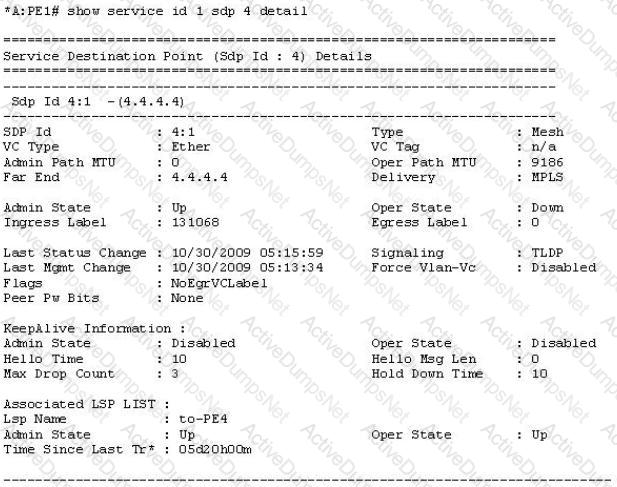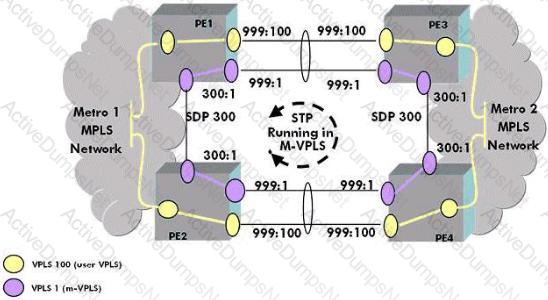Nokia 4A0-105 Nokia Virtual Private LAN Services Exam Practice Test
Nokia Virtual Private LAN Services Questions and Answers
Which of the following needs to be considered when designing Ethernet networks with redundancy?
Click on the exhibit below.

CE-A sends frames with 2 tags. If the SAP on PE-A is "sap 1/1/1:1 .*" and the SAP on PE-B is "sap 1/1/1:100.200" how many tags will there be on the frame when it egresses from the SAP on PE-B?
Click on the exhibit below.

Which port will become the alternate port?
An l-VPLS can be associated with many B-VPLS services.
What function in IEEE 802.1 ah helps to limit the amount of MAC addresses learned in the core?
What action will be taken when an MPLS router receives a frame with a label that does not exist in the LFIB?
A router has just learned the 10th MAC address while the FDB size is also set to 10. What is the likely outcome?
How does PBB forward broadcast, unknown-unicast and multicast traffic from a B-VPLS to an l-VPLS?
Click on the exhibit below.

The following VPLS services and SAPs have been configured. Which of the following statements is true?
What are the benefits of a hierarchical VPLS architecture? (Choose 3)
Why are provisioning requirements a factor that influence VPLS design? (Choose 2)
Which of the following describes the scope of the IEEE 802.3ah EFM standard? (Choose 3)
Assuming TLDP and RSVP are both being used in an MPLS network core which of the following statements is true?
Click on the exhibit below.

Based on the output below which of the following statements is true? (Choose 2)
In Rapid Spanning Tree Protocol, a Backup Port is on the same switch as a Designated Port?
If the max remote-age timer of a B-VPLS is reached, what happens to the remotely learned MAC addresses in the l-VPLS service?
Click on the exhibit below.

Which ports will become root ports? (Choose 3)
The "discard-unknown" command has been enabled at the VPLS level. Which of the following statements is true? (Choose 2)
Click on the exhibit below.

Given the following output what is the most likely reason the SDP binding is operationally down? (Choose 2)
How is it possible for multiple services to be carried over the same MPLS LSPs?
Click on the exhibit below.

You have been requested to add load balancing across the redundant spoke-SDPs in the network shown. What further configuration is required? (Choose 2)
What option is available when using PBB to reduce the amount of required VPLS services?
Which of the following statements about Spanning Tree Protocol is true?
